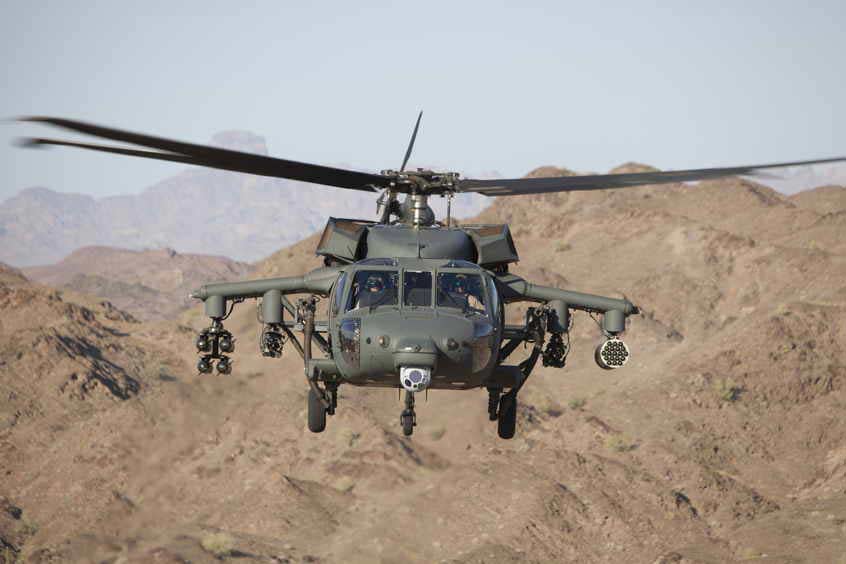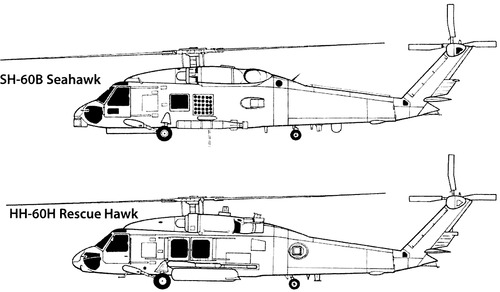Leading Attributes and Advantages of the Sikorsky S 70 Helicopter
Leading Attributes and Advantages of the Sikorsky S 70 Helicopter
Blog Article
High-Performance Multi-Role Rotorcraft Featuring Advanced Cockpit Technologies and Integrated Sensor Equipments
The world of rotorcraft modern technology has actually seen notable developments in recent times, especially in the realm of high-performance multi-role rotorcraft equipped with advanced cabin modern technologies and seamlessly incorporated sensing unit systems. These advancements have not just increased the operational capabilities of rotorcraft but have actually additionally substantially affected contemporary aviation operations on numerous fronts. From enhanced mission versatility to improved functional effectiveness, the convergence of innovative cabin innovations and integrated sensing unit systems has ushered in a brand-new age of opportunities for rotorcraft applications. In the complying with discussion, we will certainly check out the advancement of rotorcraft innovation, dig right into the realm of advanced cabin developments, and examine the effects of integrated sensing unit systems on the operational convenience and effectiveness of modern rotorcraft.
Evolution of Rotorcraft Technology
The evolution of rotorcraft modern technology has actually been marked by substantial innovations in aerodynamics, materials, and propulsion systems, shaping the abilities and efficiency of modern-day rotorcraft. Aerodynamic renovations have improved the performance and ability to move of rotorcraft, allowing for enhanced speed, dexterity, and security throughout trip (sikorsky s 70). Technologies in products, such as using composite products and progressed alloys, have actually led to lighter yet stronger rotorcraft structures, improving overall performance and resilience. Furthermore, improvements in propulsion systems, consisting of a lot more effective engines and ingenious propulsion modern technologies, have actually made it possible for rotorcraft to attain greater elevations, faster speeds, and greater payloads.
These improvements have not only transformed the capabilities of rotorcraft yet have actually also increased their applications throughout different industries, consisting of armed forces, commercial, and emergency situation services. The continual development of rotorcraft innovation remains to drive technology in the area, pushing the borders of what is possible and forming the future of upright trip.
Advanced Cabin Innovations
Building upon the foundational innovations in the rules of aerodynamics, materials, and propulsion systems, the world of rotorcraft technology currently shifts emphasis towards introducing Advanced Cockpit Innovations. The assimilation of innovative technologies within the cabin environment plays a critical function in boosting the operational capacities, safety, and effectiveness of modern rotorcraft. sikorsky s 70. Advanced Cockpit Innovations incorporate a large variety of features developed to provide pilots with boosted situational recognition, streamlined data administration, and user-friendly control interfaces
One of the essential innovations in cockpit layout is the application of glass cockpits, which replace typical analog evaluates with high-resolution display screens. These electronic systems offer adjustable formats, real-time data integration, and enhanced readability, making it possible for pilots to access vital details at a look. Additionally, advanced avionics systems, such as fly-by-wire controls and increased fact display screens, are revolutionizing exactly how pilots engage with the aircraft, allowing for accurate control and improved decision-making abilities.


Incorporating advanced cabin advancements not only boosts pilot efficiency but additionally adds to overall objective performance and safety in complex operational settings. By leveraging state-of-the-art modern technologies within the cockpit, rotorcraft manufacturers are setting brand-new requirements for operational excellence and goal success.
Integrated Sensor Solutions
With the evolution of rotorcraft technology, the combination of advanced Integrated Sensing unit Systems has ended up being extremely important in enhancing functional performance and safety and security. These Integrated Sensor Equipments encompass a vast variety of modern technologies that offer critical information for various functions such as navigating, surveillance, targeting, and environmental surveillance. By seamlessly incorporating sensing units like radars, cameras, lidar, and infrared systems right into rotorcraft, drivers can take advantage of improved situational understanding, boosted mission abilities, and minimized pilot work.
One key advantage of Integrated Sensing unit Equipments is their ability to gather real-time data and supply workable insights to pilots and mission operators. For instance, progressed radar systems can detect and track targets over fars away, enabling very early hazard detection and efficient action preparation. Additionally, integrating electro-optical and infrared cams allows rotorcraft to perform reconnaissance and security goals with precision and precision.
Essentially, the assimilation of sophisticated a fantastic read sensor innovations into rotorcraft not just enhances operational effectiveness but also contributes considerably to general goal success and staff safety and security. As rotorcraft proceed to evolve, the function of Integrated Sensor Systems will most certainly continue to be at the forefront of advancement in the aerospace market.
Operational Versatility and Efficiency
Enhancing operational versatility and efficiency in rotorcraft is an all-natural development from the assimilation of innovative Integrated Sensor Systems. By leveraging the data and insights offered by these advanced sensing unit systems, rotorcraft can optimize their efficiency across various objectives and atmospheres.
Functional adaptability encompasses the ability of rotorcraft to adapt to various roles and circumstances successfully. With sophisticated cockpit modern technologies and integrated sensor systems, rotorcraft can seamlessly shift in between tasks such as search and rescue, clinical discharge, security, and extra. This convenience improves the rotorcraft's capability to satisfy diverse functional requirements without requiring considerable reconfiguration.
Efficiency in rotorcraft operations is vital for taking full advantage of mission performance and resource use. Integrated sensing unit systems play an essential function in boosting operational effectiveness by providing real-time information on weather, surface mapping, target tracking, and more. This data makes it possible for pilots to make informed decisions quickly, maximize trip courses, conserve gas, and enhance general objective efficiency.
Effect on Modern Aviation Operations

Furthermore, the combination of advanced sensing units helps with improved goal planning and implementation, allowing rotorcraft to execute a variety of tasks with improved accuracy. From search and rescue operations to aerial firefighting and police missions, the abilities of modern rotorcraft outfitted with sophisticated cabin technologies and incorporated sensor systems are unparalleled.
Additionally, the influence of these developments expands past operational effectiveness to cost-effectiveness and sustainability. By maximizing flight routes, gas internet usage, and upkeep timetables, high-performance rotorcraft geared up with innovative cockpit modern technologies and sensing units contribute to minimizing functional costs and environmental effect, making them indispensable possessions in modern air travel operations.
Final Thought
Finally, the high-performance multi-role rotorcraft with advanced cabin modern technologies and incorporated sensing unit systems represents a considerable advancement in aeronautics technology. These innovations enhance functional flexibility and effectiveness, eventually affecting modern-day aeronautics procedures in a favorable way. The combination of these sophisticated modern technologies enables boosted capacities and performance in various mission scenarios, showcasing the continued advancement of rotorcraft technology in the air travel market.
The realm of rotorcraft technology has seen notable innovations in current times, particularly in the world of high-performance multi-role rotorcraft equipped with innovative cabin technologies and perfectly integrated sensor systems. From boosted goal versatility to improved functional effectiveness, the convergence of advanced cockpit technologies and visit the site incorporated sensor systems has ushered in a brand-new era of opportunities for rotorcraft applications. In the complying with discussion, we will certainly discover the development of rotorcraft innovation, delve right into the realm of advanced cockpit technologies, and take a look at the implications of incorporated sensing unit systems on the operational versatility and effectiveness of modern rotorcraft.

Report this page